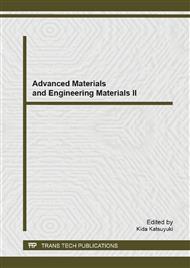p.258
p.262
p.266
p.271
p.275
p.280
p.289
p.293
p.297
Numerical Simulation of the Transient Temperature Field during Gas Quenching
Abstract:
Based on the theory of heat transfer, phase transformation and thermal non-elasticity, a nonlinear coupling heat-conduction equation considering phase transformation, nonlinear surface heat transfer coefficient and variable physical properties during gas quenching is proposed and solved by means of Finite Element Method (F.E.M). The transient temperature field is obtained and the influencing factors are analyzed and discussed. It might be valuable for some practical applications and for the development of theory.
Info:
Periodical:
Pages:
275-279
Citation:
Online since:
April 2013
Authors:
Price:
Сopyright:
© 2013 Trans Tech Publications Ltd. All Rights Reserved
Share:
Citation:


